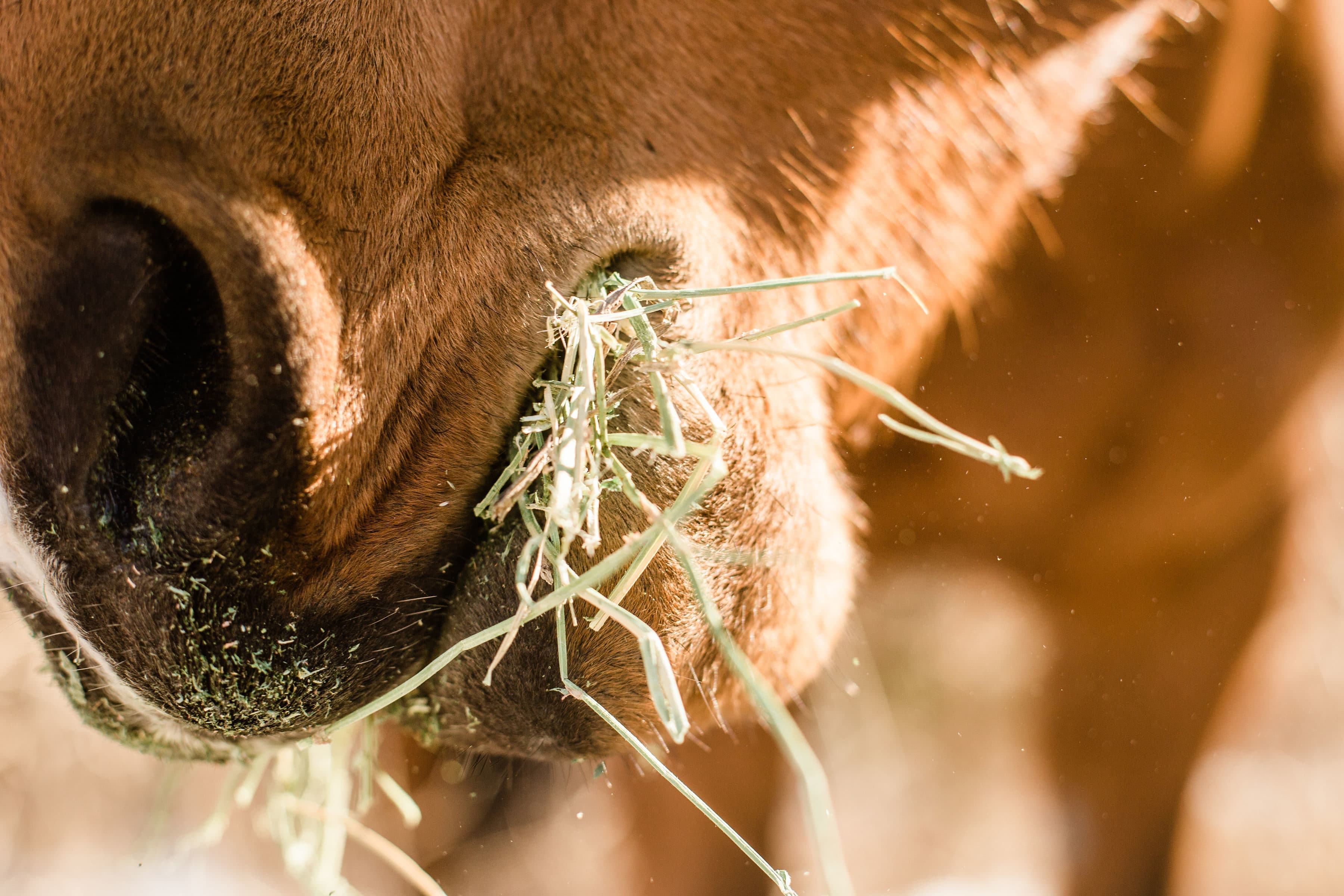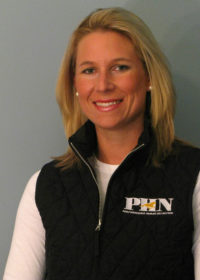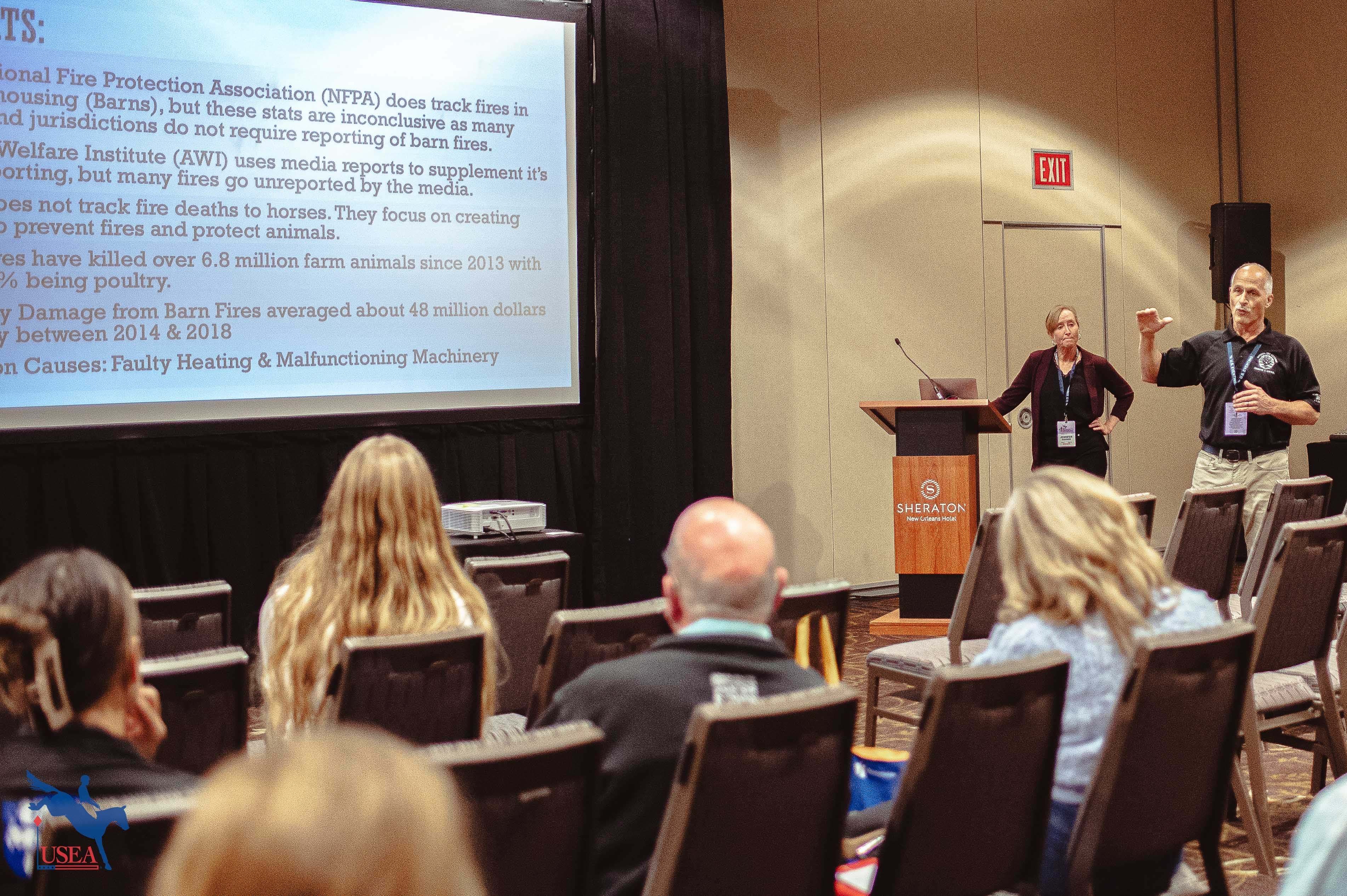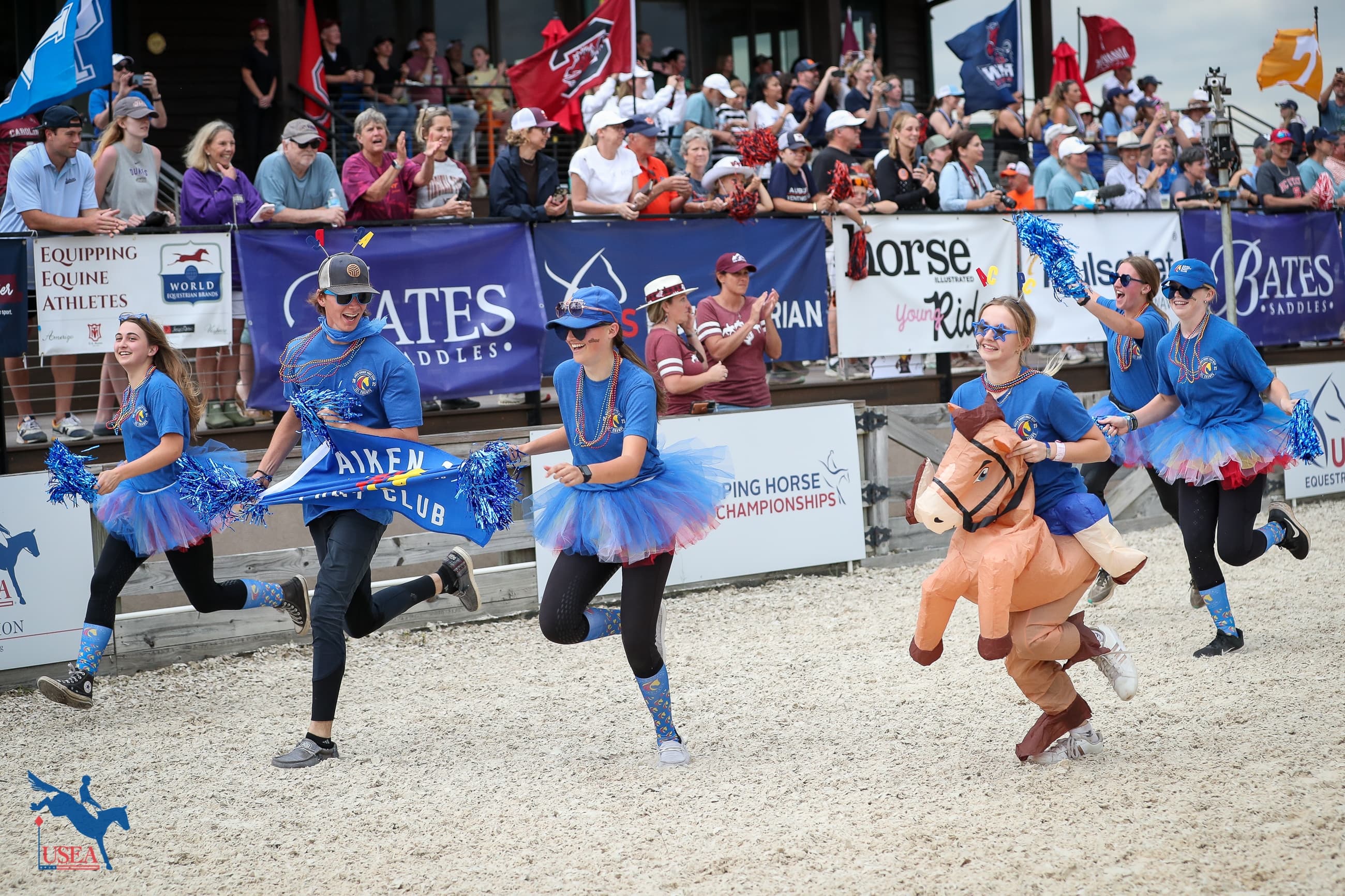Hay is For Horses - Seven Important Forage Questions Answered by an Equine Nutritionist | Presented by Standlee Premium Products

Equine nutrition is the foundation of our horse’s success in the show ring and a large and necessary part of their diet falls into the category of forage. We caught up with Standlee’s resident forage expert Dr. Tania Cubitt, Ph.D., of Performance Horse Nutrition to chat about all things hay-related and to help you get a solid foundation of understanding for the importance of selecting and supplementing the forage in your horse’s diet.
How much hay does a horse need to maintain their body weight and keep their digestive system working properly?
This is a great question. We have generalized ranges, we usually say anywhere from 1.5-2.5% of a horse’s body weight. So you have a 1000 lb horse, and you are looking at 15-25 lbs to maintain body weight and keep their digestive system working properly. If you have a little bit of a harder keeper, you are going to lean towards the 2.5% or if you are feeding a little less of your concentrate, you are going to lean more on the upper end. If you have more of a fatter horse, you will lean more toward the 1.5%. If you have a horse on a weight-loss program, I like to do 1.2% of their current body weight and that gets you around their ideal body weight.
What are the differences between a legume and a grass forage?
At the outset, a legume is something like alfalfa or clover, or soybeans. They are a different plant species from grasses, which there are a variety of different kinds of grasses. When we think of grasses, we think of orchardgrass, bermuda, timothy, that kind of thing. The main nutritional difference when it comes to feeding a horse is predominantly that legumes are higher in protein, but that is good quality protein. When I say that, I mean higher in lysine. Legumes usually have a little more calories than most of our grass hays and are higher in calcium. Legumes such as alfalfa and clover are also much lower in sugar. They primarily store their energy as starch and not sugar, so they are much lower in non-structural carbohydrates.
Your grass forages fall under such a huge umbrella of different types of plants. Harder keepers typically need more legumes, but if you have an easier keeper or a horse with some sort of metabolic issue, then you are really digging deeper within the grass group as to which one we want to feed.

Is there a nutritional difference between providing your horse hay versus Standlee products such as pelleted forage or cubed forage?
The alfalfa is cut in the field under perfect growing conditions in Idaho and then dried for Standlee products either go into their bales or is cut and goes into their cubes and pellets. It is
the exact same original product that goes into any form. When it comes to which one might be more appropriate for your horse, there is no nutritional difference between long-stem alfalfa hay, chopped alfalfa hay, alfalfa pellets, or alfalfa cubes. The only caveat to that is that sometimes people will spray a little oil on the outside of a chopped forage to keep the dust down, so it would have a little bit higher calories. Where the huge difference lies is more physiological. When horses chew long-stem hay, they chew for longer and create more saliva. Saliva buffers stomach acid, which mimics that natural grazing pattern which is ideal. Pellets or cubes, horses are going to consume those a lot quicker. So in a pound of long stem hay versus a pound of cubes, the horse will get the exact same nutritional value, it is just that the pellets or cubes they are more likely to get in 10 minutes versus with actual hay that they will consume in more like a half of an hour.
What makes a grass hay a warm grass versus a cool grass?
It is all about when the grasses grow. Cool-season grass varieties are most productive when the temperatures are between 65 and 76 degrees Fahrenheit. We have things like orchardgrass, bluegrass, timothy, and rye, which would all be examples of cool-season grasses. These grasses tend to have a little higher protein content and a little higher non-structural carbohydrates, so sugars and fructans, than warm season grasses.
Warm-season grasses are the most productive when the temperatures are between 85 and 95 degrees Fahrenheit. They are more drought tolerant, so they take less water. They have a lot more dry matter, so they grow in more bulk. Think of bermudagrass, crabgrass, and bahia grass. The other thing is that warm season grasses do not store their energy or fructans. Fructans make up one of the components of this non-structural carbohydrate story - so if you have a hare that has laminitis or certain metabolic disorders and they need a lower sugar and starch diet, then we want to factor in the fructans. Usually, the warm-season grasses will be lower in those sugars and starches than the cool-season grasses.
As a Ph.D. equine nutritionist, what are some first questions that you ask to help horse owners determine what type of forage will work best for their horse?
There are so many questions to ask, but I think firstly the most important is what is your horse’s body weight and body condition? Body weight gives us an estimate of how heavy they are, but it doesn’t tell me anything about their actual body fat. If I said to you, “this horse is 1000lbs,” in most people’s minds they might think, “oh it is a perfect size horse!” But what if it is a Shire? Then it is very thin. Or what if it is a mini? Then it is super fat. So we need to also look at body condition as well.
Then we need to ask what the horse does- how much exercise does it do? Would we consider it moderate, heavy, or intense exercise? Or more maintenance? Is it a broodmare or a young growing horse? I need to know their physiological stage.
Then we ask, are they an easy keeper or a hard keeper? All of these questions I would ask if the world was perfect and I could tell people exactly what hay to buy and then they had all the money in the world and all the access in the world to go buy that hay. But, ultimately, feeding horses is really easy, but it has to also fit into the budget of the owner and the availability of the forage, and the management style of the horse.
We all know that everything about horses is extremely expensive and there is no cutting corners. If we have ten horses in a barn and I have very, very conservatively said that a horse is going to eat 1.5% of their body weight a day, 15lbs of hay, and we look at it sort of over the winter months, which there are about five months of fall mud, winter, and then spring mud, that is 150 days. If we do 15 lbs a day for 150 days, that is over a ton of hay per horse. Then we have ten horses in the barn, so we are looking at 10 tons of hay and then the owner has to figure out how to source that quantity of hay, afford that quantity of hay, and then how they are going to store that quantity of hay.
Ultimately, I have to really work with what people have access to. I can usually tell people what feed and supplement to feed, when it comes to the hay, they usually come to me with their hay source already. Where I use a lot of the Standlee products with my horse owners is that a lot of times they will use it as a supplemental hay. Perhaps they are buying the alfalfa pellets because their hay supplier provides a local grass hay that you feed 90% and then you supplement that to get a little bit more calories and protein by using the Standlee alfalfa.
How is best to transition a horse from one hay type to another and what can happen if you make that transition too quickly, or don’t have a transition period at all?
When we make transitions in feed, it is 100% to do with all of the bacteria and microbes that live in the hindgut of the horse. We call that the microbiome. It takes horses 21 days to fully adjust to new food types. So let’s say we have a young horse that has been living the life out in the field, grazing and getting a ration balancer and now he is going to come in and go to a trainer. And the trainer is going to feed him a better quality hay, he is going to get more alfalfa and start getting grain because he is getting more exercise. We need to take that two-week, 14-day period to fully adjust him and I think people are familiar with doing that with grains, but oftentimes they don’t think about doing it with their hay. So if the horse is used to eating a local meadow hay that is lower in protein and calories and then tomorrow you just throw in all alfalfa, I guarantee they will get diarrhea because those microbes in the hindgut are like, “what is this?”
Think - what do you feed your horse the most of in their diet? It is the forage. So when you changed the grain, you change from a high-fat, high-fiber grain and you think you want your horse to go faster so you change him to a higher-carbohydrate diet, we know to do that over 14 days, but he is eating 6-8lbs of that a day at max, but they are eating 25lbs of hay? Even small differences in hay, because you are feeding such a large quantity, can make such a huge difference.
Of the Standlee products, what do you find yourself referring your clients to the most in terms of helping their horses reach their nutritional goals?
I think for me the pellets and cubes are the most recommended because I live out on the East Coast and it is very difficult for people to grow quality alfalfa out here, so if I am recommending alfalfa to a lot of clients it is usually the pellets or cubes. The Standlee products are extremely good quality and a lot of quality control has gone into them, so typically I recommend more of those products and it is more just about where I live and what people have available to them.
About Dr. Tania Cubitt

Dr. Tania Cubitt is a native of Queensland Australia. She received her Bachelor of Science from the University of Queensland in Animal Science and her Master of Science from Virginia Tech in Equine Nutrition and Growth. She later received her Doctor of Philosophy in Equine Nutrition and Reproduction also from Virginia Tech. Dr. Cubitt currently holds a position as a nutrition consultant with Performance Horse Nutrition. Her interests are focused on developing feeding strategies for horses with special needs including metabolic syndrome, developmental orthopedic disease, gastric ulcers, and senior horses, as well as feeding the broodmare.
Dr. Cubitt works closely with Standlee Premium Western Forage® to provide cutting edge nutritional information and standards. Standlee is proud to make Dr. Cubitt an official Equine Expert and connect her resources directly with Standlee's customers.














